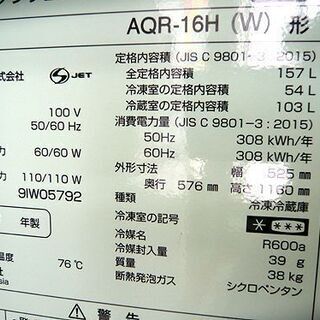
マイストア
変更
お店で受け取る
(送料無料)
配送する
納期目安:
06月09日頃のお届け予定です。
決済方法が、クレジット、代金引換の場合に限ります。その他の決済方法の場合はこちらをご確認ください。
※土・日・祝日の注文の場合や在庫状況によって、商品のお届けにお時間をいただく場合がございます。
札幌 157L 2019年製 2ドア冷蔵庫 アクア AQR-16H ミルクホワイト 一人暮らし 単身者向け 新生活 AQUA 100Lクラス 本郷通店DIANEvonFURSTENBERGの詳細情報
DIANEvonFURSTENBERGシルエット···フレア季節···オールシーズン
ベストセラーランキングです
近くの売り場の商品
カスタマーレビュー
オススメ度 4.7点
現在、6373件のレビューが投稿されています。





























